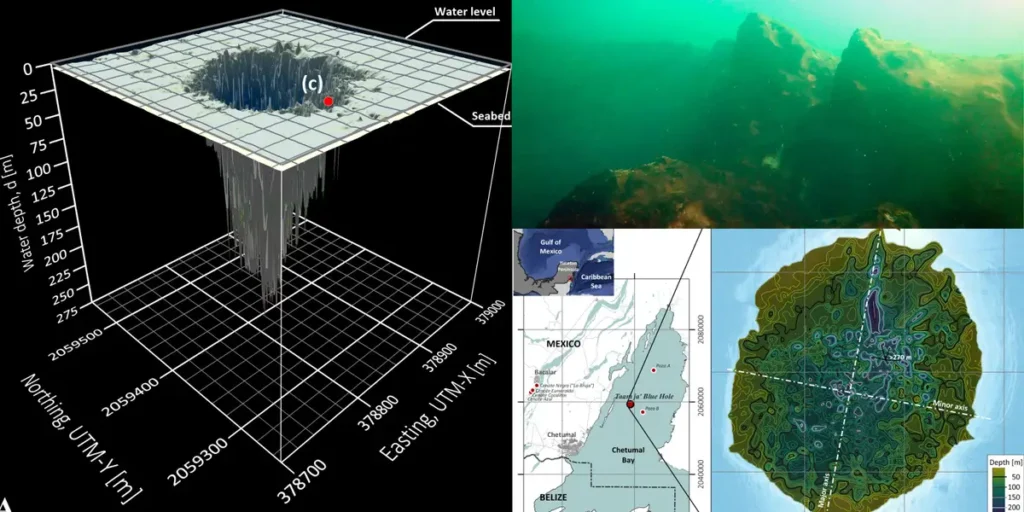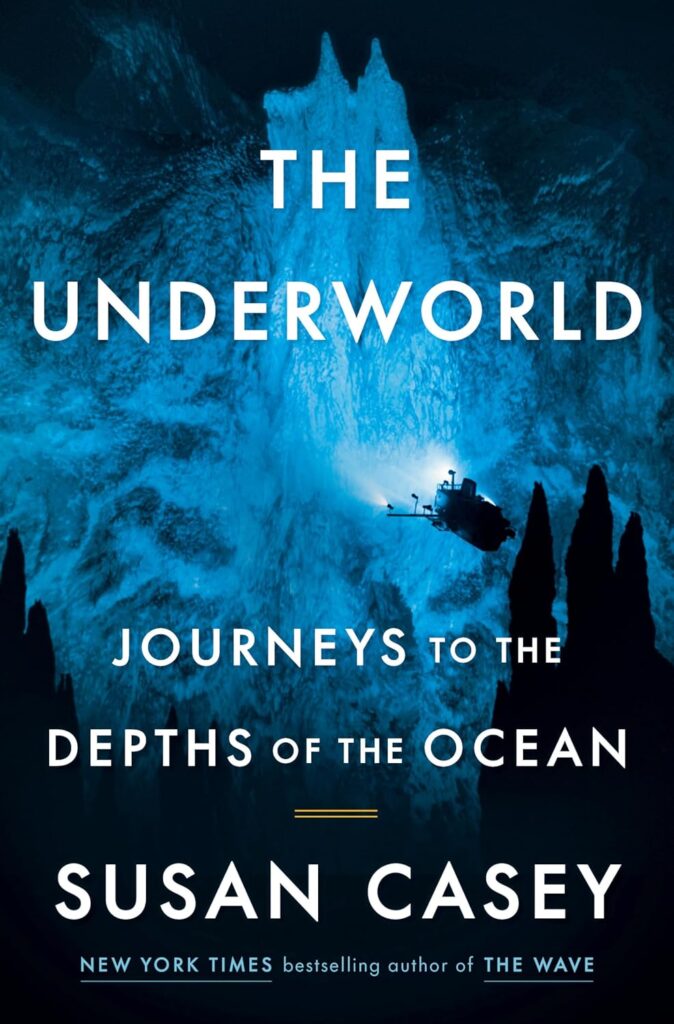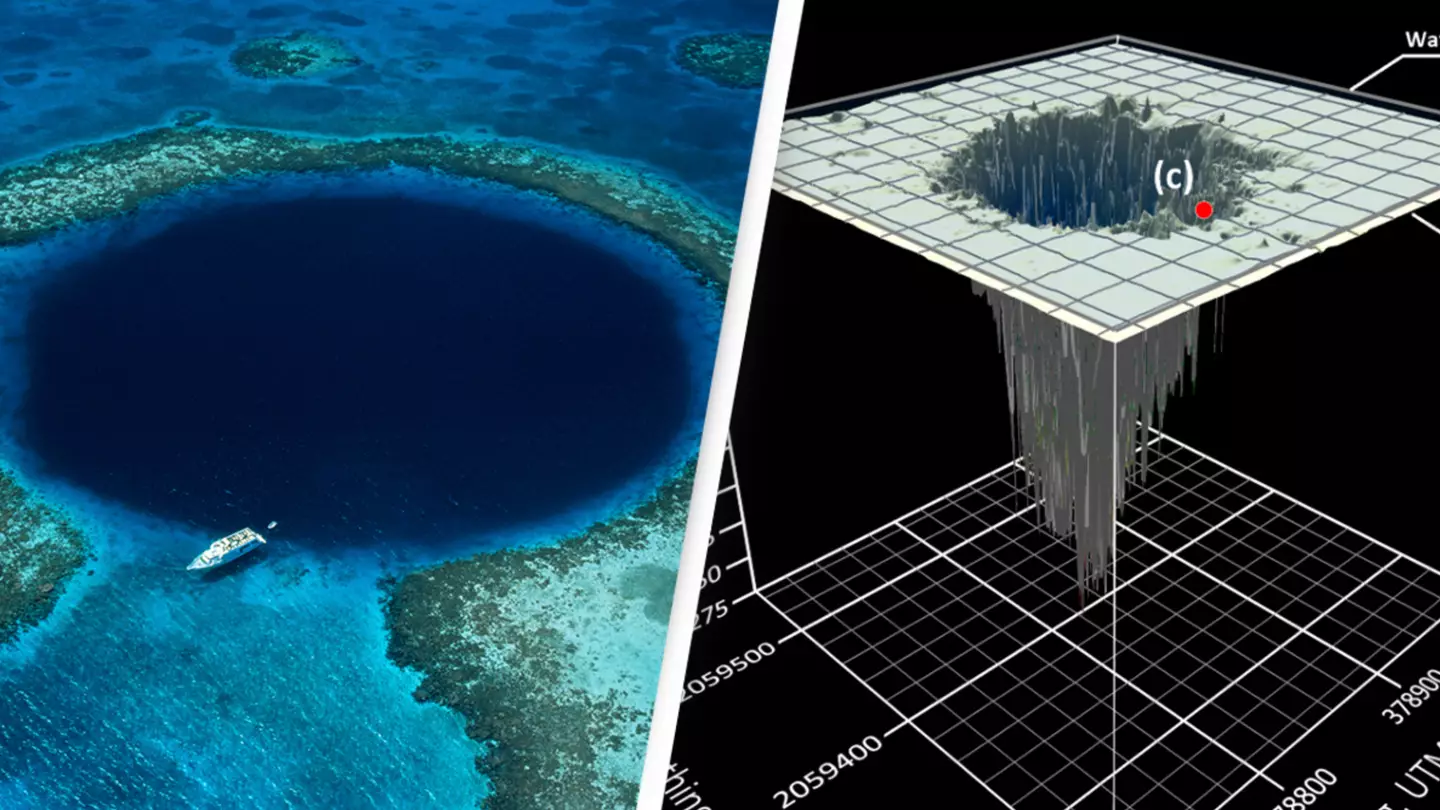Scientists have discovered a colossal blue hole off the coast of Mexico that plunges deeper than any other known on Earth. This “bottomless” pit surpasses the Dragon Hole in the South China Sea by over 100 meters, with its depths currently exceeding 420 meters.
From above, the 150-meter-wide chasm resembles an eye, surrounded by a vibrant blue seabed. Located near Belize, this enigmatic hole was officially documented in 2023, claiming the title of the world’s second largest blue hole.
However, the true marvel lies in its unfathomable depth. Sound waves, typically adept at traveling through water, cannot penetrate beyond 274 meters within the hole. This suggests the presence of a pycnocline, a dense layer of water that disrupts sound signals.
Researchers from a Mexican scientific center attempted to plumb the depths further. In December 2023, they lowered a measuring device from a boat stationed in the center of the hole. Despite deploying 500 meters of cable, the instrument still failed to reach the bottom.
The limestone walls of the Taam Ja’ blue hole descend at an angle, causing the device to reach a depth of 420 meters before stopping. The very bottom, scientists believe, remains a mystery.
Future expeditions with underwater robots are planned to delve deeper. Interestingly, data collected at the 400-meter mark revealed a sudden shift in water conditions, aligning with those of the Caribbean Sea. This hints at the possibility of a tunnel connecting the hole to the open ocean.

The Yucatan peninsula is renowned for its unique geology, riddled with over 10,000 freshwater-filled sinkholes (cenotes) and an intricate network of underground caves and rivers. These geological wonders have unveiled valuable archaeological and biological treasures, fueled by sheer scientific curiosity.
Many of these cenotes surround the Chicxulub crater, the impact site believed to have triggered the dinosaur extinction. Scientists suspect this event played a significant role in shaping the region’s unusual geological landscape.
While these cenotes often harbor thriving ecosystems despite their low-oxygen environments, the same could be true for the neighboring Taam Ja’ blue hole. Biologists worldwide are actively exploring blue holes to understand their unique ecosystems, often discovering entirely new lifeforms.
Researchers at ECOSUR believe that the depths of Taam Ja’ could hold undiscovered biodiversity, potentially linked to the hole’s unique physical and chemical processes, forming a one-of-a-kind biotope. The team eagerly awaits their next opportunity to delve into this fascinating underwater world.
Sources:
Published 29 April 2024 in Frontiers in Marine Science | Recent records of thermohaline profiles and water depth in the Taam ja’ Blue Hole (Chetumal Bay, Mexico)
https://doi.org/10.3389/fmars.2024.1387235
Discover:

The Underworld:
Journeys to the Depths of the Ocean
$14.99 (50% off)
“An irresistible mix of splendid scholarship, heart-stopping adventure writing, and vivid, visceral prose.” —Sy Montgomery

